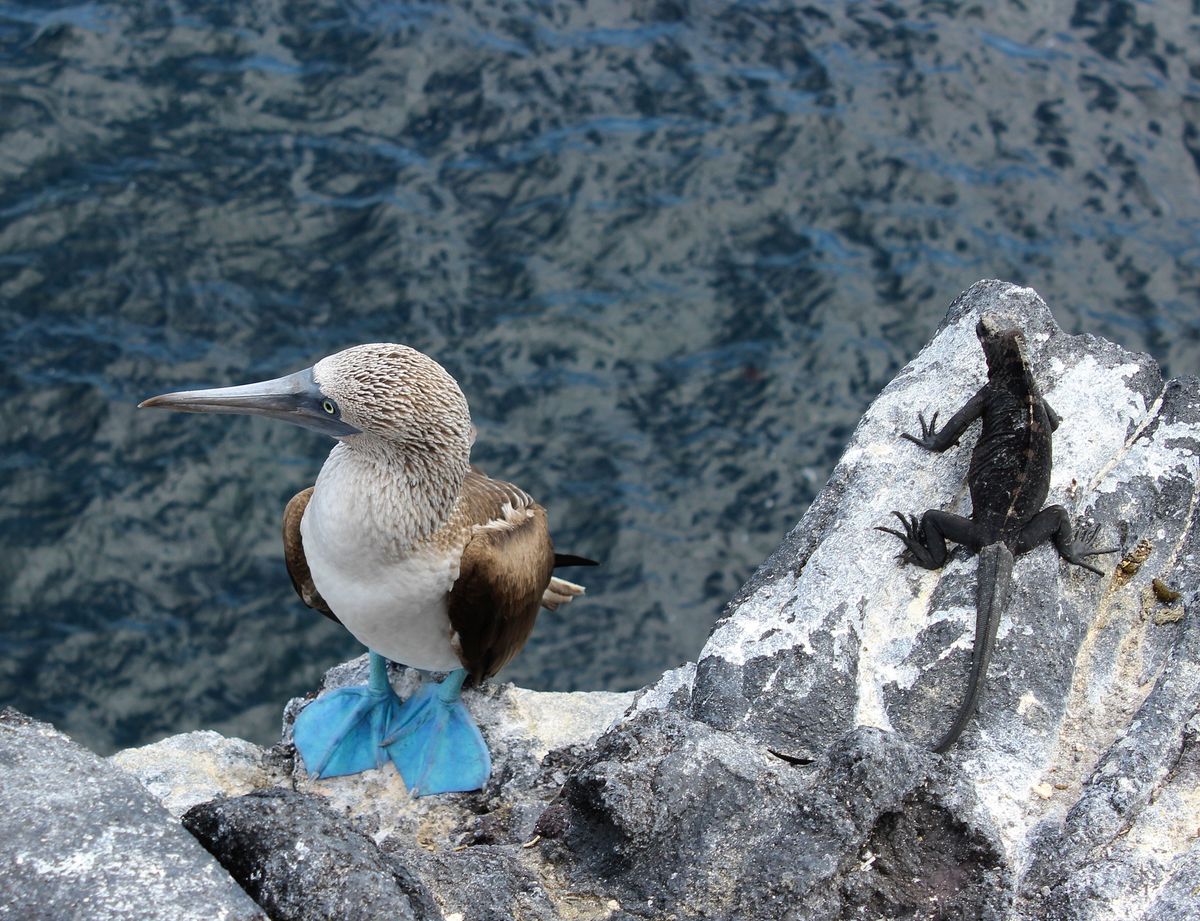Blue-Footed Boobies Are Declining in the Galapagos

The population of blue-footed boobies — the seabirds with characteristically colorful feet — has been declining in the Galápagos islands.
The birds' numbers have dropped more than 50 percent in less than 20 years, according to a study published Monday (April 21) in the journal Avian Conservation and Ecology. The researchers speculated that a lack of sardines, a source of food for the boobies, might be to blame for the decline.
The researchers first noticed the decrease in the booby population in 1997.
"Until 1997, there were literally thousands of boobies at these breeding sites, and hundreds of nests full of hatching chicks," study author Dave Anderson, a professor of biology at Wake Forest University, said in a statement. [In Images: 100 Most Threatened Species]
"Then, suddenly, the boobies just weren't there," Anderson said, adding that, in a few cases, the birds had attempted to breed, but most did not produce offspring.
Recently, a team of seabird biologists monitored the birds' breeding at four of the largest blue-footed booby breeding colonies in the Galápagos. The researchers discovered that between May 2011 and June 2013, the boobies bred little or didn't breed at all, and the scientists found only 134 fledgling birds during the study period.
The research team also discovered that there were only about 6,423 boobies living in the Galápagos in 2012, which was less than a third of the estimated number in the 1960s.
Sign up for the Live Science daily newsletter now
Get the world’s most fascinating discoveries delivered straight to your inbox.
Previous research on booby colonies has shown that the seabirds can breed only during periods when their diet consists almost exclusively of sardines. In the new study, the researchers found that sardines constituted less than half of the blue-footed birds' current diet.
This suggests the surviving boobies may be getting enough sardines to live, but not to breed, the researchers said.
The shortage of sardines in the Galápagos region remains unexplained. It could be due to overfishing, or sardines leaving Galapagos waters due to climate change or other pressures, said Johannah Barry, president of the Galápagos Conservancy.
Because the boobies are not breeding, young birds are not replacing older ones, which means that the population as a whole is aging, the researchers said. And it is even harder, or impossible, for older birds to raise offspring, than it is for younger ones.
So far, research has not directly linked the booby population decline to human activity, Anderson said. "But if humans are in fact contributing to this decline, we need to get to the bottom of it now rather than five years down the road, when you have the equivalent of 75-year-old humans trying to breed," he said.
Follow Agata Blaszczak-Boxe on Twitter. Follow Live Science @livescience, Facebook & Google+. Original article on Live Science.










